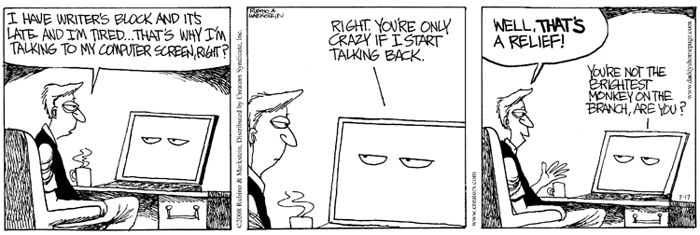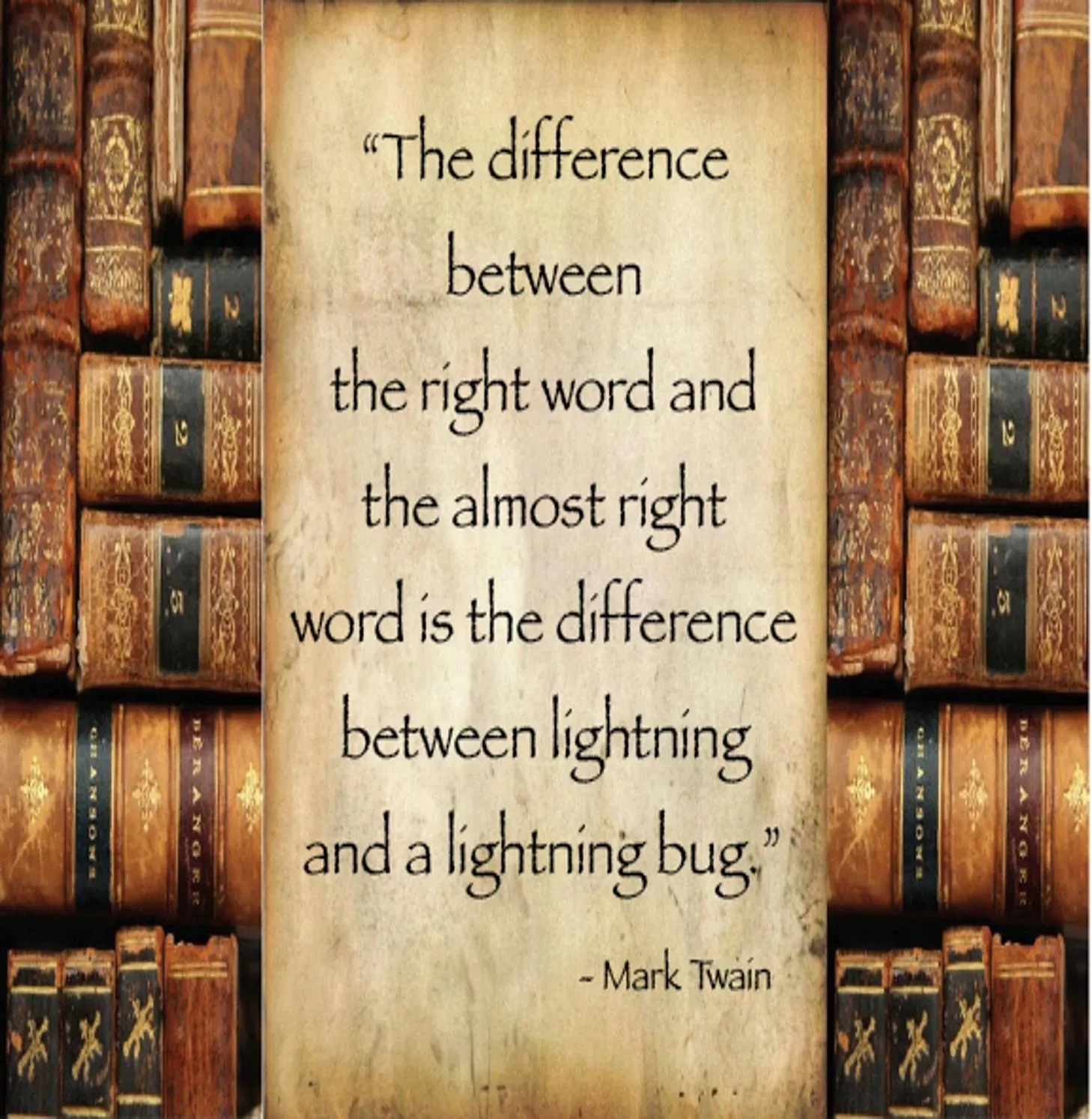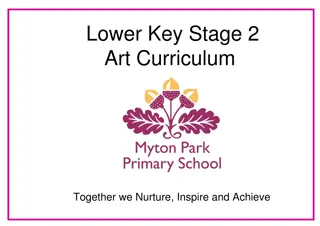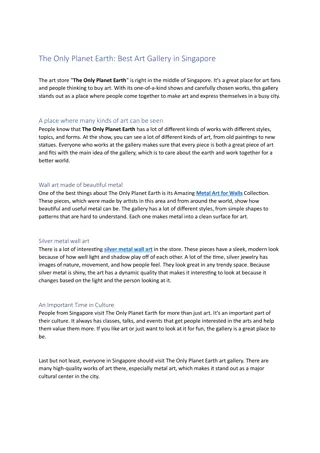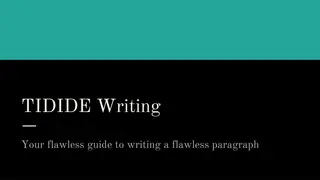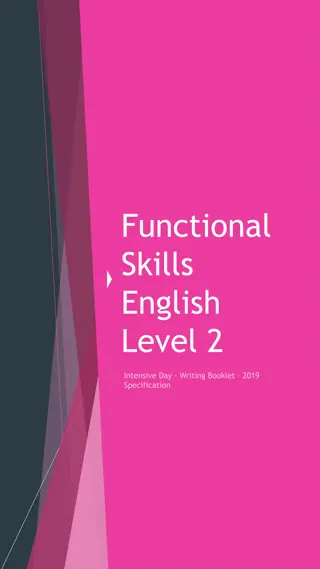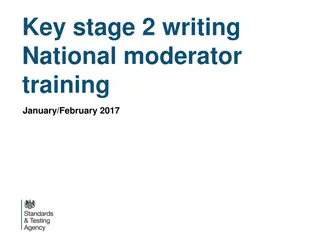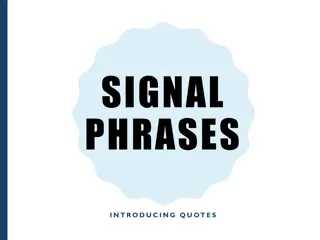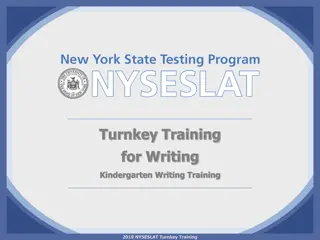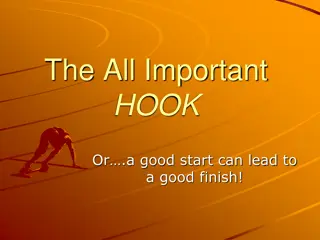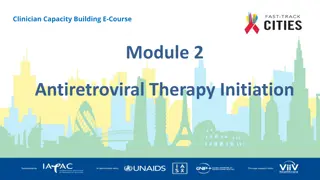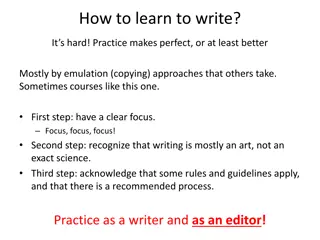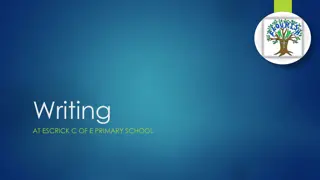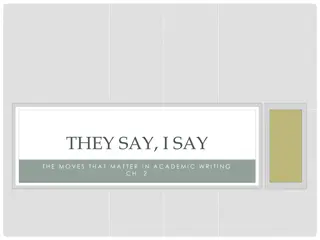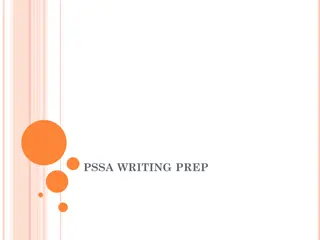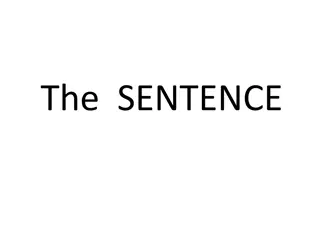Mastering the Art of Good Writing
Crafting compelling writing requires attention to detail, from intriguing leads to precise word choices and smooth transitions. Explore the essential elements of good writing, including tips for engaging readers and a checklist for evaluating writing quality. Learn about different types of leads in writing, from straight news to anecdotal, and understand how they shape the reader's experience. Enhance your writing skills and captivate your audience with the power of words.
Download Presentation

Please find below an Image/Link to download the presentation.
The content on the website is provided AS IS for your information and personal use only. It may not be sold, licensed, or shared on other websites without obtaining consent from the author.If you encounter any issues during the download, it is possible that the publisher has removed the file from their server.
You are allowed to download the files provided on this website for personal or commercial use, subject to the condition that they are used lawfully. All files are the property of their respective owners.
The content on the website is provided AS IS for your information and personal use only. It may not be sold, licensed, or shared on other websites without obtaining consent from the author.
E N D
Presentation Transcript
GOOD WRITING IS NOT EASY Writing
Writing Tips Interesting Leads Exciting verbs Add color by observation Write like you talk Organize well Make the reader care
Writing Checklist Good Writing has: phrasing appropriate word choices clear transitions no misplaced modifiers parallel construction sequence of tenses correct grammar and punctuation Assignment: Go through an article and decide what kind of grade it should receive on each of the above categories on a scale of 1 to 10. accurate information interesting proper correct spelling Recommended by: Avi Bass, Northern Illinois University
Leads - The Agony Jack Cappon of The Associated Press called it, rightly, the agony of square one. There is no getting around it, although every writer sometimes wishes there were, Cappon says. Every story must have a beginning. A lead. Incubating a lead is a cause of great agony. Why is no mystery. Based on the lead, a reader makes a critical decision: Shall I go on?
Straight News Leads Inverted Pyramid Second day lead Summary lead Who, what, when, where, why, how? Which news value should be emphasized? A convicted arsonist awoke Tuesday to find that his bedroom was filled with smoke. He escaped and later said that he had fallen asleep while smoking. Henry Smyth, 29, who served a three-year term for Mayor Henry Smyth escaped injury Tuesday when he awoke to find his bedroom filled with smoke. Smyth said he had fallen asleep while smoking in bed.
Summary News Leads When dealing with several important elements, a summary lead can sum up what happened instead of highlighting a specific action. A bill requiring employers to give workers up to three months unpaid leave in family emergencies won Senate approval Thursday evening.
Anecdoctal Leads Jake Novotny doesn t pay rent. He lives in a spacious 30 square feet, that he s outfitted with a bed, bookshelf and desk. You will most often find his house in different SNC parking lots, or occasionally at High Altitude Climbing Gym.
Interesting leads capture attention What started out as a group of guys playing golf together has grown into a club with big plans for the future. People did the unthinkable for their club. Imagine a city of almost 60,000 people with minimum rules and laws, no judgments and no commerce or cash. Welcome to Black Rock City, Nev. Things are about to get weird.
His Southern accent and professional attire will not change, but soon his title will. With six championships in the past six years, the Sierra Nevada College snowboard team began dry-land training without the help of former coach Jeff Corrado.
SAN QUENTINIn the end, Robert Alton Harris seemed determined to go peacefully, a trait that had eluded him in the 39 violent and abusive years he spent on earth. After Life of Violence Harris Goes Peacefully by Sam Stanton The Sacramento Bee, April 22, 1992 A healthy 17-year-old heart pumped the gift of life through 34-year-old Bruce Murray Friday, following a four-hour transplant operation that doctors said went without a hitch. It Fluttered and Became Bruce Murray s Heart. By Jonathan Bor Syracuse Post-Standard, May 12, 1984
A lead with rhythm Going to church does not make you faithful, buying a guitar does not make you talented and attending college does not make you an adult. What may appear to some as just dots and lines is really Bill Gilbert s journey through New Mexico.
Why they work Tension / conflict Spark curiosity Describe a detail that has a larger meaning
Avoid: Topic leads The school board met to discuss complaints about the cafeteria. What were the complaints? What happened? Question leads What has the school board decided to do to reduce complaints about the cafeteria food? Doesn t get to the information; but question leads can be clever. What s wrong with the lettuce? It s wilted, a faded shade of green, and the top complaint in the cafeteria, as the school board discovered in its Thursday meeting. Quote leads The cafeteria food is awful, and it costs too much, said sophomore Anne Chovey, at the school board meeting Thursday. Opinion, doesn t summarize story, don t know who is speaking immediately
The Great Lede Test Read the lede for an article. Now ask, does this sentence make you want to read the next sentence and the rest of the story? Assignment: Go through a series of articles, reading only the lede. After you read the lede, vote as a group on whether you are enticed to read the rest of the story. Talk about what it does (or doesn t do) that draws you into the story. Recommended by: Kathy Norton, Poughkeepsie Journal
Transitions Use them to tie your paragraphs together. Don t jump from one subject to another in a new paragraph without giving the reader some warning. Road signs directing readers through a story. New information should be connected to information already introduced. Can be a word, phrase, sentence, parallelism.
Circling Problem areas Assignment: Go through an article and circle every period using a bright highlighter. Now look at the pattern of periods looking for areas where you see longer sentences. See if this helps you identify sentences that may be too long. Typically, longer sentences are where you find grammatical errors, needless prepositions and other impediments to good writing. See if the story has a good balance of long and short sentences. Recommended by: Denny Wilkins, St. Bonaventure University
Three types of verbs Active verbs. The subject performs the action. They move the action and reveal the actions. Bond climbed the stairs Passive. The subject receives the action of the verb. They emphasize the receiver, the victim. Mistakes were made by the students. To be. A linking verb that is neither active or passive. They link words and ideas. She is going to write a long story.
Active verbs The man was bit by the dog. There was a dog biting the man. The dog sunk his fangs into the man s forearm, tearing red ribbons into his flesh.
Make the verbs active The Rotary Club meeting will be held at noon Monday in Room 125. The Rotary Club will meet at noon Monday in Room 125. The Rotary Club meets at noon on Mondays in Room 125.
Active verbs Winter introduces household chores, car and house preparations Crickets chirped loudly in my ear. I tossed in my sheets, eyesstuck shut like a newborn puppy. Struggling to open them, I barely made out the words on the device from which the sound was being obnoxiously emitted. 6:50am Alarm, option snooze.
Avoid Too Many Linking Verbs Winter break at Sierra Nevada College marks a change among the Outdoor Adventure Leadership community. The Tahoe weather slowly transforms from warm and sunny to cold and snowy, forcing a change on a few of the usual ODAL activities. There is a change in the ODAL community for winter. The weather is now cold and snowy, instead of warm and sunny. This is changing the usual ODAL activities.
Strong verbs instead of lazy adverbs & adjectives The radio played loudly The radio blared She said in anger She snapped She walked quietly Her feet whispered across the floor
2. Use concrete language ABSTRACT CONCRETE vessel bottle, bowl, glass, can creature angel, pony, seahorse equipment hammer, snow plow or ?
Active Language Everyone tells you to write using an active voice. Anyone ever tell you how to do that? Here s one suggestion. Assignment: Try going through a story and highlighting every are, is, were, and was. Now find a way to rewrite the sentence using a stronger verb. Recommended by: Denny Wilkins, St. Bonaventure University
Add color with observation When I sit down to write a story, I want people to see the story, I want people to feel what I feel, hear what I hear, taste what I taste, smell what I smell. So those are kind of the basic Writing 101 things that I'm using. The colors, the smell, the marked-up pages of his Bible... Oftentimes, when I'm in these situations interviewing people, I have a finite amount of time. As they're speaking and the tape recorder is rolling, I'm writing down these details all the time. It's like, what am I struck by? Her kitchen is perfectly clean. It's black and white. A little girl sitting in her high chair, but she's not eating her Cheerios, all the things that are happening around me... DeNeen L. Brown, The Washington Post
3. Omit needless words He said that he would go. Wore a white goatee on his chin In the month of May The sum of money a domestic violence relationship violent YOU TRY: For the purpose of shocking Will draw to a close For a short space of time
4. Use short words LONGER Aggrandizement Compensation Enumerate Fundamental Inception Mitigate Paradigm Supplement SHORTER Growth Pay Count/number Basic Beginning Ease Model Add to
Let the source describe: How did you feel when What did you feel when What is your favorite or least favorite What did it smell like , sound like Ask questions directly related to their senses.
Show me the details Show, don t tell. (However, you have to have reported the details well to be able to do that.) Assignment: Go through an article and find examples where a writer could have benefited from using details to show the reader something rather than just telling them about it. Also, find examples where the writer succeeded in showing you something. Recommended by: Rene Kaluza, Day city editor/training editor, St. Cloud Times
Nut graph So what? Address this question: What is this story really about? in one word. Greed, politics, sacrifice, loss, redemption, family, hope, freedom? It could be any of these things. But once you know what your story is about, you will have focus. A good story should leave a single, dominant impression. This is called your "angle".
Quote alert Recommended by: Nancy Weil, Assistant News Editor, IDG News Service Go on quote alert. Make sure every quote you use is worth using. Otherwise paraphrase. Assignment: Go through an article and highlight the quotes. Decide if it s an effective quote. Does it add to the story? Why? Should it be shorter? Should it be longer? Should it be paraphrased?
15. Paraphrase more; quote less It was really a coincidence that the wake for Seamus Heaney also became a launch event for the Irish studies minor, Cusack said. When Heaney passed away this past August, it seemed appropriate to hold an event to mark his passing. When Heaney died in August, some English department faculty decided to hold an event but didn t know what it would turn into, Cusack said. It was really a coincidence that the wake for Seamus Heaney also became a launch event for the Irish studies minor, he said. Two stacked quotes Para- phrase, then quote
Write like you talk How do you get your message across? How do you tell a friend about something? Fluid, short, with emphasis Take out the bad speech habits like READ YOUR WRITING OUT LOUD
Before you write Recommended by: Nancy Weil, Assistant News Editor, IDG News Service Organize notes and information, developing a system that works for you. Different color inks, stars, whatever. Use story wheels or write down key points of the story before you write so that you don t forget any of the elements you want to include.
Assume: They don t know They don t care Good writing creates good readers


